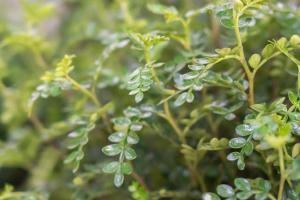What to Put in the Bottom of Potted Plants:
Potted plants are a great way to bring some greenery into your home or garden. Whether you are growing a beautiful fern, a blooming orchid, or some fragrant herbs, the container you choose plays a key role in the success of your plant. But what should you put in the bottom of your potted plants? In this article, we will explore some of the best options for creating a healthy and thriving home for your plants.
Gravel:
Gravel is a popular choice for lining the bottom of potted plants. This helps to create a drainage layer for excess water, preventing soggy soil which can lead to root rot. However, it is important to make sure you choose the right type of gravel. Aquarium gravel or decorative stones may look great but can be harmful to your plant, as they often contain chemicals or are not porous enough to allow proper drainage. Instead, use horticultural gravel or coarse sand that is specifically designed for plant use.
Pebbles:
Pebbles are another option for lining the bottom of your potted plants. They can help with drainage and also add an attractive touch to your display. Similar to gravel, choose small, non-toxic pebbles that are designed for plant use. Some gardeners even use items like broken crockery or pottery pieces as a decorative and functional way to line the bottom of their pots.
Perlite:
Perlite is a type of volcanic glass that is heated and then expanded, creating small, lightweight granules. It is a popular addition to potting soils as it helps with drainage and aeration, while also retaining moisture. Many commercial potting mixes already contain perlite, but you can also add it to your own mix or use it as a thin layer at the bottom of your pot.
Vermiculite:
Similar to perlite, vermiculite is a mineral that is heated and then expanded, creating a lightweight material that is ideal for potted plants. It helps with moisture retention and aeration, as well as improving soil structure. Vermiculite is also great for plants that prefer a slightly acidic soil, as it has a pH of approximately 7.0.
Sphagnum Moss:
Sphagnum moss is a type of moss that grows in wet boggy areas. It has excellent water retention properties while also providing good aeration. This makes it an ideal choice for lining the bottom of your potted plants. Sphagnum moss can also be added to potting mixes to help with moisture retention and as a natural fungicide.
Newspaper or Coffee Filters:
If you are looking for a more cost-effective option for lining the bottom of your pots, consider using newspaper or coffee filters. Simply place a layer of newspaper or coffee filters at the bottom of your pot before adding soil. This will help to prevent soil from falling out of the drainage holes while also providing some moderate drainage. However, keep in mind that these options may break down over time and may need to be replaced.
In Conclusion:
Choosing the right lining for the bottom of your potted plants can make a big difference in their health and growth. From gravel and pebbles to perlite and sphagnum moss, there are many options to explore. Consider the needs of your specific plants and choose the lining that will provide the best drainage, aeration, and moisture retention. With the right container and lining, you can create a healthy and happy home for your plants.

 how many times do yo...
how many times do yo... how many planted tre...
how many planted tre... how many pine trees ...
how many pine trees ... how many pecan trees...
how many pecan trees... how many plants comp...
how many plants comp... how many plants can ...
how many plants can ... how many plants and ...
how many plants and ... how many pepper plan...
how many pepper plan...
































